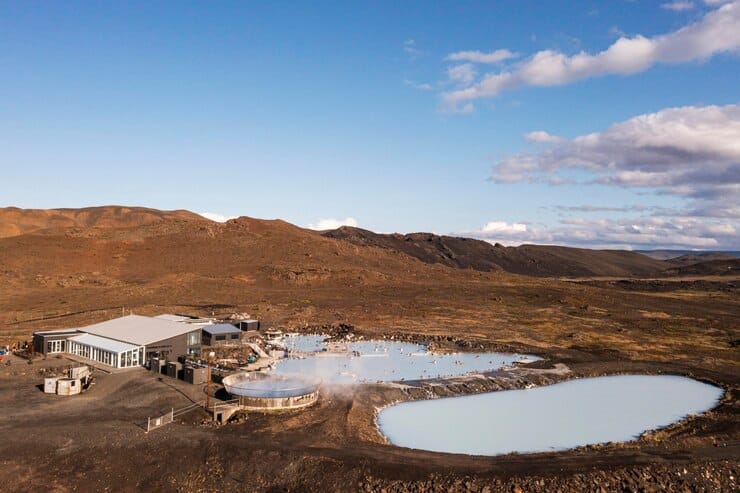
Every region of Colorado carries a heritage stemming from its prosperous mining activities that began through prospectors arriving in the Rocky Mountains until the 1800s. Present-day investors, along with hobbyists, have developed an interest in obtaining Colorado mining claims because they want to search for mineral deposits or just for recreational purposes. Doing research alongside due diligence stands as a necessity for identifying a suitable mining claim. The following guide presents important recommendations for searching for and acquiring Colorado mine claims for sale.
Purchasing a mining claim requires knowledge about the two main categories which exist.
These claims consist of ground mineral deposits containing gold, silver, copper, and other minerals found within solid rock types. The buying process for Lode claims entails extensive digging work and multiple pieces of equipment.
Placer claims include minerals in loose materials like sand and gravel. Mining riverbed deposits through panning or sluicing makes these claims easier to operate.
Concentrating your search on appropriate properties becomes easier when you understand which claim type you want to pursue.
Federal, along with Colorado state regulations, control mining claims within this jurisdiction. Pubic land mining claim management falls under the Bureau of Land Management's jurisdiction alongside the Colorado Division of Reclamation Mining and Safety's state regulation authority. Key legal considerations include:
Checking with these agencies can prevent legal disputes and ensure compliance.

Several online platforms list mining claims for sale in Colorado. Some of the most popular resources include:
Using these online tools can streamline your search for the right claim.
It’s essential to confirm that the claim you are considering is legally owned and free of disputes. To do this:
A title search will help protect you from fraudulent transactions.

Before making a purchase, it is advisable to visit the claim site. A physical inspection offers one an opportunity to:
Taking the time to visit the site can help you avoid purchasing a claim with hidden issues.
If you’re unfamiliar with mining, hiring a professional geologist or mining expert can provide valuable insights. A geologist can:
While hiring a geologist adds to the upfront cost, it can prevent costly mistakes in the long run.
Once you find a mining claim that meets your needs, it’s time to negotiate the purchase terms. Key considerations include:
A written contract should outline all agreed-upon terms and be legally recorded to protect both parties.
Before beginning any mining operations, secure the required permits. Depending on the claim’s location and mining methods, permits may be required for:
Failure to obtain proper permits can result in fines and legal issues.

Owning a mining claim comes with continuing expenses beyond the initial purchase. Be prepared for:
Budgeting these costs will be a way of keeping your mining business financially stable.
Networking with experienced miners can provide valuable guidance. Consider joining organizations such as:
Engaging with the mining community can help you stay informed on industry trends and best practices.
Research coupled with planning and investigation work hand in hand with purchasing Colorado mine claims for sale. Making an informed choice in mining ventures requires understanding laws together with proving claim ownership and site inspections with help from specialists. By applying these guidelines, you will be able to obtain a significant mining claim in Colorado if you want either an investment opportunity or recreational prospecting.

Gold used to be a precious commodity that served as a preventive measure against inflation, economic instability, and currency devaluation. Physical gold remains a typical investment choice, but shares of businesses within the gold mining and refining sector represent an option that provides specialized benefits. Gold stocks that both increase in value and distribute dividends to shareholders offer investors especially advantageous investment opportunities. This paper examines the advantages of investing in gold stock with dividends to show why these assets represent good additions to a diversified investment portfolio structure.
Gold stocks with dividends offer a steady income stream while benefiting from gold price appreciation. They provide diversification, hedge against inflation, and offer stability during market volatility. Investors gain both potential capital growth and consistent dividend payouts for long-term wealth building.

The solid reputation of gold as an economic downturn protection tool drives many investors to choose this investment avenue. Gold's value preservation quality acts as an asset during inflationary times or market-shifting phases because fiat currencies tend to lose their purchasing power.
The stock prices of established mining companies demonstrate similar directional price changes as gold. The upward trend of gold prices tends to directly pull up the value of gold stock investments as economic conditions deteriorate. Gold stocks that pay dividends give investors two valuable advantages because shareholders receive both rising stock value in addition to regular cash distributions.
Income-seeking investors, including retirees and those enhancing their earnings, prefer dividend-paying stocks. Investors get solid financial returns through dividends paid from gold stock ownership while their investment builds value over the long term.
Mining companies that maintain financial and operating stability distribute dividend payments to their shareholders. Investors can either use the dividend payments to increase their capital through return accumulation or to create additional income streams. Investors obtain money through dividend payments from gold stocks because physical gold does not produce interest or dividends by itself.
Owning gold stocks can result in substantial capital appreciation. The continuous rise in gold prices results in higher mining company revenues, which drives up profitability, so stock prices go up. Physical gold can only be appreciated through market price movements, but gold stocks grow from operational efficiency gains, new reserve discovery, and enhanced output techniques.
The combination of dividend payments from gold stock investments delivers supplementary returns. Market gold price changes do not affect the dividend payments investors receive, thus providing financial stability during up or down market movements.
A successful investment strategy requires diversification as one of its core principles. Potential investors who include gold stocks in their portfolio will gain diversification through lower-risk exposure. Portfolio investments in gold stocks protect against market drops because rising gold prices remain opposite to traditional equity trends.
Investors can benefit from two advantages with dividend-paying gold stocks. These instruments combine gold commodity exposure with dividend payment capability. Because of their value, these assets serve as a critical investment component of multi-asset portfolios.
The passage of time progressively reduces currency's buying capacity through inflationary effects. Records show that gold stands strong against inflation because it preserves its market value when money loses purchasing power through inflation. Rising inflation leads to improved gold prices, which benefits investors who own gold-related investments.
The dividend payments from gold stock investments further shield investors from inflation losses. The combination of gold's price appreciation and dividend payments provides investors with an investment vehicle that helps counter inflation effects and aids living expense management throughout inflationary eras.

Investing in dividend-paying gold stocks may offer tax advantages. In some countries, long-term capital gains and qualified dividends are taxed at lower rates than ordinary income, making dividend stocks a more tax-efficient investment than other assets.
Conversely, physical gold investments, such as gold coins and bars, may be subject to higher capital gains tax rates. By investing in gold stocks that pay dividends, investors may benefit from preferential tax treatment, leading to higher after-tax returns.
When investing in physical gold, investors need to consider storage, security, and liquidity. These concerns are eliminated with gold stocks, which are publicly traded and managed by professional teams.
Dividend-paying gold mining companies are typically well-established with strong governance and financial discipline. They strive to optimize production, manage costs, and allocate capital efficiently, all of which contribute to sustainable profitability and shareholder rewards.
One significant advantage of gold stocks over physical gold is liquidity. Buying and selling gold stocks is much easier than trading physical gold. Investors can quickly enter or exit positions through stock exchanges, whereas selling physical gold may require dealing with dealers, verifying authenticity, and negotiating prices.
Additionally, dividends provide ongoing liquidity, allowing investors to reinvest earnings or withdraw cash without selling their assets.
Investors harness dividend reinvestment as an effective method to multiply their financial wealth through repeated dividend use for additional share purchases. Shareholders who use dividends to acquire more company shares expand their share ownership without expending new financial resources.
Companies operating dividend reinvestment plans (DRIPs) enable their shareholders to invest dividends into more stock without any additional costs. The practice of reinvesting dividends produces improved total returns, particularly since share prices in the gold mining sector experience substantial market movement.
The increasing global market demand for gold persists because it serves the needs of jewelry production and technological applications and is utilized as a reserve currency by banking institutions. Mining operations that produce gold will experience sustained growth since emerging market growth continues alongside central bank gold accumulation procedures.
Gold companies that distribute dividends operate with healthy finances, allowing them to continue operating throughout markets with declining gold prices. Such companies maintain their dividend payments at a steady rate or show progressive growth because they demonstrate exceptional financial stability, thus attracting both risk-averse investors and investors seeking growth potential.
The acquisition of gold stock with dividends provides investors with three core advantages: stability together with revenue generation as well as asset price appreciation. Investors gain access to gold price stability features through these stock,s which concurrently generate revenue streams and enhance their overall investment value through time-based growth. Investors can easily utilize the combination of tax-efficient characteristics and professional management together with high liquidity to make these stocks better than holding physical gold.
The dividend payments from gold stocks provide investors with three attractive benefits: inflation protection, portfolio diversification and constant financial returns. The strategic selection of properly managed gold companies which offer dividend payments enables investors to protect their assets and grow their wealth in a sensible way despite market uncertainties. Investors who choose gold stocks that distribute dividends as part of their investment portfolio will achieve both stability in the long run and short-term value appreciation.
Mining has long been a cornerstone of industrial development, providing essential raw materials for construction, manufacturing, energy production, and technology. In recent years, however, there has been a growing trend toward the sale and acquisition of mining assets. Whether it’s the sale of operational mines, undeveloped deposits, or equipment, the dynamics of mining transactions are shaping the industry in unique ways. This article explores the opportunities, challenges, and nuances of mining for sale in today’s global market.

For mining companies and investors, purchasing a mine is a strategic opportunity to expand operations. Established mines with proven reserves can offer immediate production capabilities, reducing the time and financial investment required for development. For instance, acquiring a gold mine with operational infrastructure allows buyers to tap into revenue streams while minimizing startup risks.
Undeveloped mining deposits represent significant opportunities for exploration-focused companies. These sites often come with untapped potential and lower acquisition costs. Buyers with expertise in exploration and feasibility studies can assess the reserves and develop mines to suit specific market demands.
Mining companies frequently liquidate surplus or outdated equipment. For smaller or emerging operators, purchasing pre-owned equipment is a cost-effective way to scale operations. Sellers, on the other hand, can free up capital and optimize operations by selling underutilized machinery.
The growing demand for rare earth elements and minerals used in renewable energy technologies has led to lucrative opportunities. Mines producing lithium, cobalt, and other critical minerals are particularly attractive as industries pivot toward sustainability and clean energy solutions.

Mining operations are subject to strict regulations and environmental standards. Navigating these requirements is critical for buyers to ensure the long-term viability of acquisitions. Failing to account for permitting challenges or remediation costs can turn promising opportunities into financial liabilities.
Determining the value of a mining asset is inherently complex. Factors such as the quality and quantity of reserves, market demand for specific minerals, and the condition of infrastructure all play a role. A thorough due diligence process is essential to avoid overpaying or underestimating operational challenges.
The global mining industry is heavily influenced by commodity prices, which fluctuate based on geopolitical tensions, supply chain dynamics, and market demand. This volatility can affect the attractiveness of mining sales and the financing options available to buyers.
Mining projects often face scrutiny from local communities concerned about environmental and social impacts. Buyers must prioritize community engagement and corporate social responsibility to mitigate opposition and build sustainable relationships.
Timing is a critical factor in the sale of mining assets. Selling during periods of high commodity prices can maximize returns. Conversely, downturns in the market may result in reduced offers, making it essential for sellers to assess market conditions thoroughly.
Presenting mining assets effectively can significantly influence buyer interest. Comprehensive documentation, including geological reports, production data, and financial performance, helps potential buyers make informed decisions. Sellers should also ensure that assets comply with local regulations and industry standards.
Partnering with investment firms, brokers, or mining consultancies can help sellers reach a broader audience and attract credible buyers. These partnerships provide access to industry expertise and marketing networks that enhance the sale process.
For sellers, exiting a mining operation isn’t just a financial decision—it’s a legacy decision. Ensuring that operations continue responsibly under new ownership can preserve the seller’s reputation and maintain positive relationships with stakeholders.
Due diligence is a cornerstone of successful mining transactions for buyers and sellers alike. This process involves reviewing legal, technical, and financial details to identify risks and opportunities. It is highly recommended that industry experts assess reserves, production capabilities, and compliance records.
Negotiations in mining sales can be intricate, involving pricing structures, royalty agreements, and operational commitments. To reach mutually beneficial agreements, both parties should prioritize transparency and fairness. Legal counsel with experience in mining transactions is essential during this stage.
Acquiring a mining asset often requires substantial capital. Buyers may explore financing options such as joint ventures, private equity, or bank loans. Sellers should vet potential buyers to ensure they have the financial capacity to close the deal and sustain operations.
The transition phase is critical to maintaining operational continuity and minimizing disruptions. Clear communication between buyers and sellers, along with robust transition plans, ensures that production, workforce, and community relations are managed effectively during ownership changes.
The adoption of digital technologies and automation in mining has transformed asset evaluation and sales. Buyers are increasingly looking for mines with modernized operations, as these often promise greater efficiency and profitability.
Environmental, social, and governance considerations are becoming central to mining sales. Mines with sustainable practices, reduced carbon footprints, and positive community impacts are more attractive to socially responsible investors.
Globalization has expanded the scope of mining transactions. Buyers from different countries are investing in assets worldwide, leveraging expertise and capital to enter lucrative markets. This trend has increased competition and highlighted the need for strong legal and regulatory frameworks.
While traditional commodities like gold, coal, and iron ore remain in demand, the rise of green technologies has spurred interest in materials like lithium, nickel, and graphite. Mines producing these commodities are fetching premium valuations.
The sale of mining assets represents a dynamic intersection of opportunity and challenge. Whether it’s seasoned companies seeking to streamline operations or new entrants aiming to capitalize on emerging trends, the market for mining sales is vibrant and diverse. Mining for sale is not merely a transaction; it’s a pivotal moment in the lifecycle of a mine. Done strategically, it creates value for buyers, sellers, and the communities that depend on mining for economic development. As the industry evolves, embracing innovation, environmental responsibility, and collaboration will be key to shaping its future.